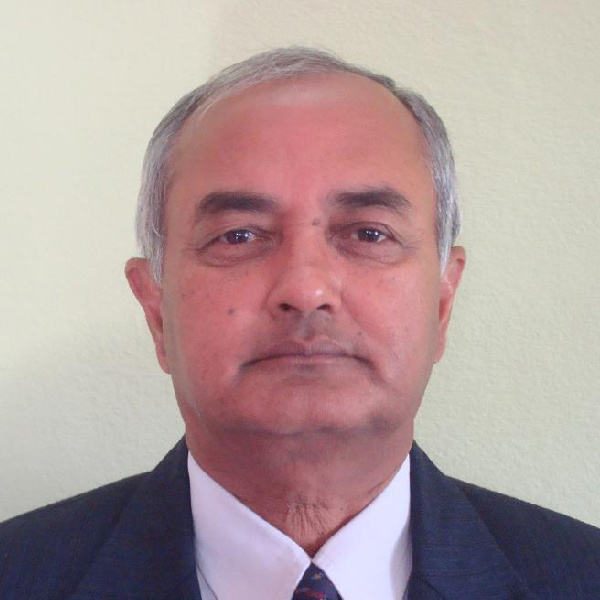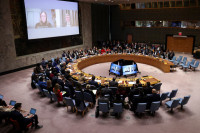Columns
State power and multilateralism in development
Newly emerging powers and consultative forums must be recognised more as collaborators than competitors.
Hiramani Ghimire
State power, or the capacity of a state to regulate behaviour and enforce order within its territory, is undergoing significant changes. In international relations, we are witnessing a progressive erosion of Westphalian sovereignty. This has implications for the security of a country as well as its development. For example, the Sustainable Development Goals (SDGs) mark an era of development cooperation involving mutual accountability of independent states. Goal 16 of the SDGs is to “promote peaceful and inclusive societies for sustainable development, provide access to justice for all and build effective, accountable and inclusive institutions at all levels”.
For the first time in history, independent states have set out a shared vision of effective, accountable, and inclusive institutions. Traditionally, development cooperation has been about designing and delivering “projects” on infrastructure and other basic services. Governance and institutions were often seen as a no-go area. With their commitment to Goal 16, independent states are bringing governance, and therefore intra-state power relations, under international scrutiny.
Influence of multilateral institutions
For a very long time, the three powerful actors have dominated developed thinking. The United Nations (UN) system, international financial institutions like the World Bank, International Monetary Fund, the Asian Development Bank (ADB), and the World Trade Organisation (WTO). The UN system has taken the lead in achieving international cooperation on development and harmonising global actions towards this. A major part of the UN’s strategy was official development assistance (ODA). The 1970 ODA arrangement included a provision that required developed countries to provide at least 0.7 percent of their GDP to developing countries by 1975. Unfortunately, this target has not been met even today. In 2021, the total ODA accounted for 0.33 percent of the GDP of Organisation for Economic Co-operation and Development (OECD) countries. Apart from finances, the UN has played a key role in broadening our understanding of “development”. The UN’s work on understanding and assessing human development, primarily within the framework of its flagship publication, the Human Development Report, has established benchmarks in a wide range of areas of progress and development areas.
However, the development performance of the UN system in practice has been rather weak. A number of institutional issues, including political and organisational tensions, have an impact on delivery. Let’s consider the case of Nepal. According to the latest Development Cooperation Report published by the Ministry of Finance, the UN’s total disbursement in Nepal was $56 million in FY 2020-21, accounting for only 3 percent of the total aid disbursements.
International Financial Institutions (IFIs) have long been a major source of advice and influence in both development thinking and practice. Their intellectual contributions are also very important, which we saw in what is known as the “Washington Consensus”. With the Washington Consensus losing its support base, thought leadership is shifting away from the IFIs. In Nepal, however, they are key actors in terms of policy influencing through financial transfer. The World Bank provided the largest volume of official development assistance (47 percent of all aid) in 2020-21. The ADB was the second largest donor, contributing to 15 percent of all ODA. What is possibly changing is that Nepali authorities are becoming more self-assertive with increasing fiscal space. We see this reflected in the government’s Foreign Aid Policy, 2019.
The WTO plays a referee’s role when it comes to trade-distorting policies. It has perhaps the strongest mechanism for dispute settlement among all multilateral institutions. However, its influence has declined because of the progressive erosion of the effectiveness of its “court system” (now dysfunctional) and the proliferation of regional trade agreements. No wonder, then, the private sector in Nepal keeps complaining about the lack of benefits from the country’s much-celebrated membership of the WTO.
New players
The international aid architecture has changed with power shifts in political and economic terms. The western world no longer has a monopoly on ideas, strategies, and norms governing development cooperation. The Development Assistance Committee of OECD was the sole agency to develop policies and strategies for development aid. Meanwhile, other competing forums have emerged. Non-OECD donors, including China and India, are exercising their influence over aid policies. A number of BRICS forums are debating development cooperation issues. The emerging agenda of South-South cooperation will also have an impact on how global debates on development are structured and legitimised.
The rise of China as a donor is noteworthy. Actual figures on Chinese aid are not available, but some estimates suggest that Chinese aid is in the range of $6 billion per year, accounting for a meagre 0.05 percent of Chinese Gross National Income. But China exercises a significant level of influence among its partner countries, particularly in Africa. Unlike traditional donors of the West, China gives its partners freedom to choose how to use aid money without insisting on policy changes or governance standards. Furthermore, the focus is on infrastructure, compared to western donors’ emphasis on institution-building, human development, and participatory approaches. To some observers, the Chinese approach to aid represents a challenge for western donors. The Chinese initiative to establish the Asian Infrastructure Investment Bank (AIIB) to develop infrastructure and improve connectivity in Asia has attracted wide international attention, as demonstrated by the membership of several European countries in it. As an international institution, the AIIB also focuses on accountability systems, corruption control, and social safeguards. The AIIB is, therefore, expected to gain international recognition for China as a “normative power” in international financial systems. The New Development Bank, also known as the “BRICS Bank”, is another example of efforts from rising powers to create opportunities for development finance without having to rely on traditional donors. The Shanghai Cooperation Organisation, which aims to emerge as a counterbalance to western powers, too, illustrates the growing dominance of China. These developments are viewed as a “silent revolution” in international debates on development cooperation.
Nepal often takes an opportunistic position in these forums. It actively participates, for example, in the development discourse dominated by western powers. At the same time, the country is also a dialogue partner in the rather conservative and geopolitically oriented Shanghai Cooperation Organisation.
In addition to official development assistance (ODA), which was $178.9 billion in 2021, global philanthropy has been playing an increasingly important role in advancing the development agenda. For example, the Bill and Melinda Gates Foundation alone disbursed $6.7 billion in aid in 2021, surpassing 24 of the 29 OECD donor countries. Understandably, the foundation seeks a corresponding role in policy influencing.
The changing political and economic landscape and the emergence of new private players suggest that development cooperation requires a new delivery model. The public sector is no more the sole channel for financial flows to developing countries. This does not mean that aid flowing from the public sector is losing its relevance. It is still very important, and it can be even more effective if governments could leverage their influence to enable more active participation of other actors, including the private sector. In addition, newly emerging powers and consultative forums must be recognised to be seen more as collaborators than competitors.




 5.44°C Kathmandu
5.44°C Kathmandu















